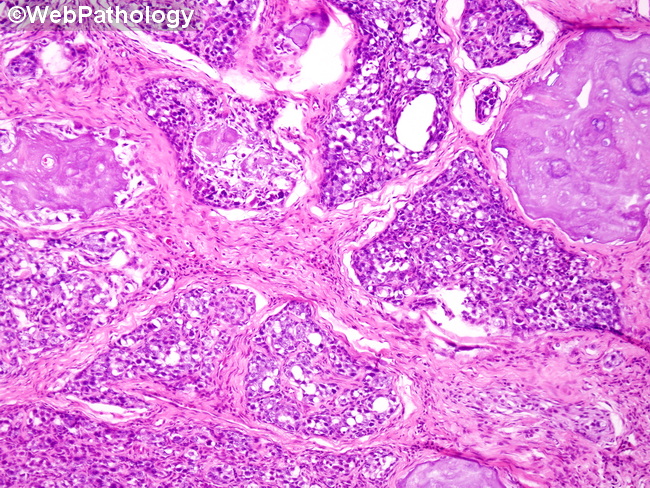Gonadoblastoma : Molecular Pathogenesis


Comments:
Molecular Pathogenesis: Gonadoblastoma almost always occurs in dysgenetic gonads. About 80% of patients are phenotypic females but genotypic males and have a Y chromosome (intact or a fragment). The most common karyotypes in gonadoblastoma are 46XY (46, XY pure gonadal dysgenesis) and 45X0/XY (45,X0/46,XY mosaicism, Turner syndrome). Patients with XX gonadal dysgenesis are not at risk of developing gonadoblastoma. Routine karyotypic techniques may not always detect the Y chromosome and molecular methods may be required for its identification. A region termed GBY (gonadoblastoma locus on the Y chromosome) near the centromere on the short arm of Y harbors a gene that confers susceptibility to gonadoblastoma in patients with dysgenetic gonads. The gene TSPY1 (testis-specific protein Y) encodes a protein that plays a role in cell-cycle regulation, chromatin remodeling and transcriptional regulation in the normal testis, but predisposes abnormal germ cells in dysgenetic gonads to tumorigenesis. The progression from gonadoblastoma to invasive germ cell tumor is associated with loss of expression of TSPY1 by immunohistochemistry. The image shows nests composed of immature dysgerminoma-like cells and smaller sex cord cells, separated by fibrous stroma. Several foci of stromal calcification are present.



